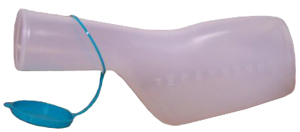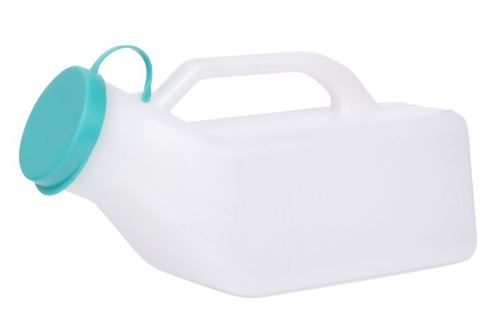URINAL, male, 1 litre, with lid, plastic, graduated
STD
EMEQURIN1P-
Valid Article
Account code:
60210
HS Code:
392690
Last Updated on:
29/06/2025, 22:41:33
Former
Code(s):
-X
CE marking: declaration that the product meets EU standards for health, safety, and environmental protection. The CE marking indicates that the product may be sold freely in any part of the European Economic Area, regardless of its country of origin.
V0812 - Feces and urine collection aids (bed pans and parrots)
European Medical Device Nomenclature (EMDN) is the nomenclature of use by manufacturers when registering their medical devices in the EUDAMED database. EMDN is characterised by its alphanumeric structure that is established in a seven-level hierarchical tree.
In Europe, medical material that fulfills the definition of a medical device according to the MDR (Medical Device Regulation) is classified into 4 classes
The product is part of at least one Kit.
A kit is a collection of products (medical and/or logistic) that are needed for a certain intervention in emergency. The choice and quantity of the articles reflects the MSF protocols for this specific situation. The use of Kits allows to start an intervention without a detailed evaluation.
URINAL, male, plastic
Definition
A urinal is essentially a handheld portable toilet used by people unable to use a bathroom toilet. It is a bottle style and is used to collect urine only, in a sitting or standing position. It is anatomically designed for male use.
Specifications
Quality standards
BS 3215, 1995, Specification for reusable portable urinals
Technical specifications
- Translucent plastic. The preferred plastics are polyethylene (HDPE) or polypropylene (PP) for strength, durability and low cost.
- Polyethylene urinals are often favoured for personal use at home as these can simply be washed with water and detergents.
- Polypropylene products tend to be preferred in hospitals due to its ability to withstand the high washing temperatures required by hospital standards.
- Narrowed opening at the ‘neck' of the bottle.
- With easy to hold handles (preferred)
- All edges should be contoured and surfaces should be smooth with no hidden rims that can attract bacteria.
- Flat bottomed bottle: more stable and less likely to spill
- With a secure fitting lid which reduces the risk of leaks, spills and odours
- Capacity: 1 liter
- Graduated: per 100 ml
Instructions for use
- Intended for hospital wards.
- Must be replaced regularly.
- Must be disinfected between patients with chlorine
Some restricted information has been hidden. Sign in
to see this information





![[EMEQBEDP1P-] BEDPAN, with handle, polypropylene](/web/image/product.template/573031/image_256/%5BEMEQBEDP1P-%5D%20BEDPAN%2C%20with%20handle%2C%20polypropylene?unique=1f9468d)
![[KMEDMHAE23-] (mod AMP) MEDICAL EQUIPMENT 2021](/web/image/product.template/574351/image_256/%5BKMEDMHAE23-%5D%20%28mod%20AMP%29%20MEDICAL%20EQUIPMENT%202021?unique=8014f55)
![[KMEDMHHE23-] (mod hospital) MEDICAL EQUIPMENT 2021](/web/image/product.template/574732/image_256/%5BKMEDMHHE23-%5D%20%28mod%20hospital%29%20MEDICAL%20EQUIPMENT%202021?unique=8014f55)
![[KMEDMHWE33-] (mod ward) MEDICAL EQUIPMENT 2021](/web/image/product.template/574356/image_256/%5BKMEDMHWE33-%5D%20%28mod%20ward%29%20MEDICAL%20EQUIPMENT%202021?unique=8014f55)